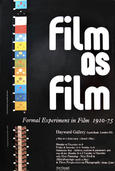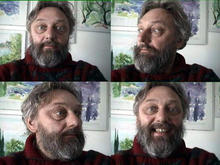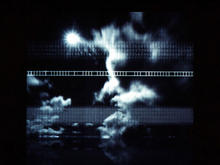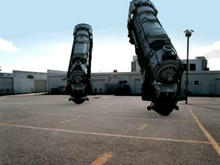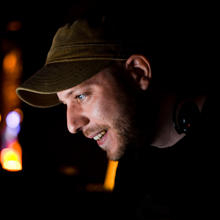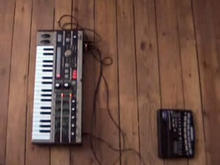Berlin Horse
(1970)by Malcolm LeGrice is based on two sequences – one shot originally in 8mm and re-filmed in 16mm - the other a piece of found early newsreel. The sound is an original track by Brian Eno.
The common subject is horses - a horse being exercised and horses being led from a burning stable. Malcolm LeGrice made Berlin Horse in 1970, with both visual sequences being treated at the London Film Makers Cooperative.
The 8mm sequence was shot in the village of Berlin near Hamburg, northern Germany. It was re-filmed from the screen running the film at different speeds and directions and with the camera at different angles. Later it was re-coloured using theatrical lighting gelatins in the film-printer and subject to multiple superimposition. It was finally combined with early newsreel of horses being led from a burning barn. It is a poetic drama where the sequence of image transformations and the 'narratives' are integrated as the content. The sound is an original track by Brian Eno.
Source: Lighthouse
This film is largely filmed with an exploration of the film medium in certain aspects.
It is also concerned with making certain conceptions about time in a more illusory way than I have been inclined to explore in many other of my films. It attempts to deal with some of the paradoxes of the relationships of the "real" time which exists when the film was being shot, with the "real" time which exists when the film is being screened, and how this can be modulated by technical manipulation of the images and sequences.
The film is in two parts joined by a central superimposition of the material from both parts. The first part is made from a small section of film shot by me in 8mm colour, and later refilmed in various ways from the screen in 16mm b/w. The b/w material was then printed in a negative positive superimposition through colour filters creating a continually changing 'solarization' image, which works in its own time abstractly from the image. The second part is made by treating very early b/w newsreel of a similar subject in the same way. As a two screen film the second screen has a b/w version of the whole film. MLG.
Source: UbuWeb
